War is an armed conflict among humans, utilizing violence, attacks, and killings to achieve specific goals.
For ordinary people, war is an extremely brutal event; wherever the flames of war ignite, human lives are surely devastated. Although humans have always yearned for peace, war has never been far from humanity, from ancient primitive societies to modern industrial civilizations.
In fact, in a broader sense, war is not limited to humans. In nature, wars often break out among animal species, both within the same species and among different species. Considering the level of devastation, conflicts among animals can be just as catastrophic as those among humans.
In the state of Maharashtra in central and western India, there is a village named Lavul, which has a substantial population of about 5,000 people. The village has relatively few families that keep dogs, and most dogs are not leashed, allowing them to roam in packs. Additionally, there are many stray dogs around the village, which sometimes mingle with the village dogs.
India is home to a significant population of monkeys, which are considered sacred by Indians, leading to a large number of these animals in the country.
One day, a female monkey took her baby for a walk at the entrance of Lavul village. For unknown reasons, the female monkey clashed with the pack of dogs in the village. Unfortunately, the mother monkey and her baby quickly found themselves overwhelmed by the dogs.
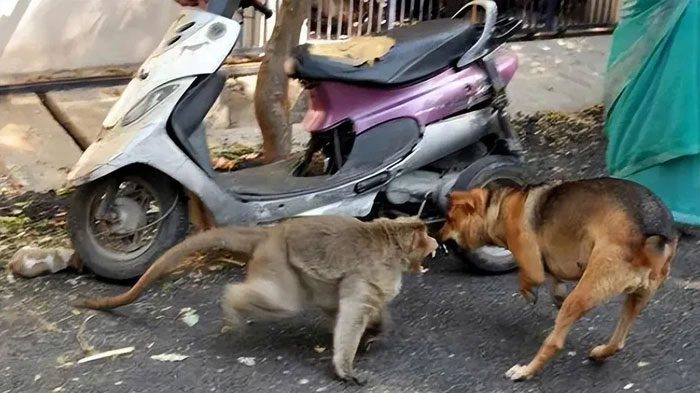
According to expert Stephanie Poindexter at the State University of New York in Buffalo, who specializes in the behavioral ecology of primates, some animals, like monkeys, can indeed seek revenge. Some packs of hyenas have also been known to retaliate against the individuals that attacked them.
Afterwards, the mother monkey escaped from the pack of dogs, but unfortunately, her baby was bitten to death by the vicious dogs.
Once the mother monkey returned to her group, she seemed to have informed the others of what had just occurred. The next day, the group of monkeys sent “scouts” to Lavul village, and several monkeys began roaming the village to locate the distribution of the dog pack.
Days later, a troop of monkeys arrived at Lavul with a substantial “army” and tightly surrounded the entire village. They continuously searched for the village dogs and threw stones upon spotting them. The monkeys also took any dogs they caught onto the rooftops and treetops before throwing them down.
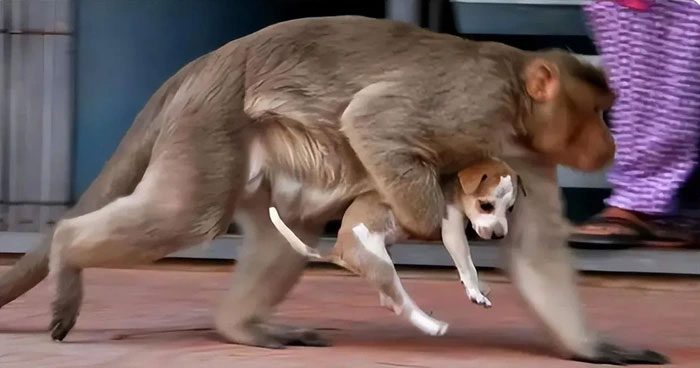
Whenever the monkey troop spotted a dog approaching, they would capture and throw it down from a height.
After the massacre, Lavul village was filled with the carcasses of dogs. According to local estimates, the monkey troop had killed over 200 dogs.
However, the monkeys’ revenge was not yet over. In the following days, they continued to roam the village, attacking any dogs they saw. The villagers had to find ways to protect their dogs. However, the villagers’ protective actions only angered the monkeys further, leading them to start attacking the children of the village on their way home from school, causing great fear among the residents.

Even children were chased and attacked by monkeys while on the road. An 8-year-old student was reportedly dragged away by the monkeys, forcing villagers to throw stones to drive them off.
The conflict between monkeys and dogs in India represents a classic battle between different animal species. Thousands of kilometers away in Tanzania, Africa, a tragic incident occurred among members of the same species.
Jane Goodall is a world-renowned primatologist born in London, England. In 1960, at the age of 26, Goodall accompanied her mother to Gombe Stream National Park in Tanzania, where she conducted decades-long research on chimpanzees.
The story revolves around a group of chimpanzees, and Goodall witnessed the Gombe Chimpanzee War.
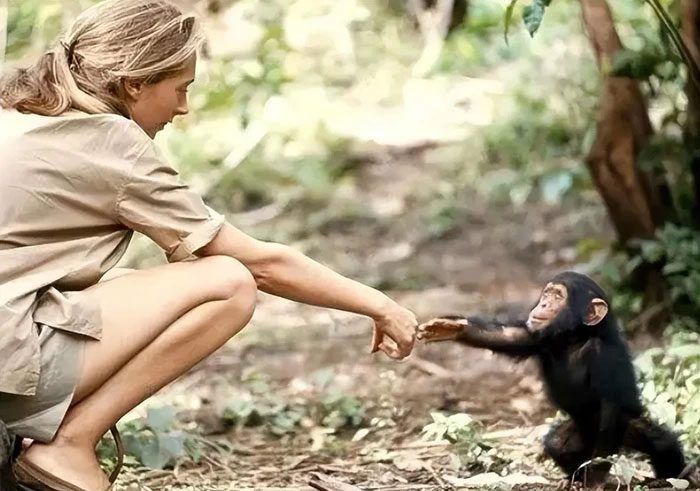
By 1970, Jane had spent ten years in the Gombe rainforest in Africa, developing a close relationship with the chimpanzees there. She particularly liked a family of chimpanzees known as Kasakra, as they were a very united group. She gave beautiful names to many members of this chimpanzee group.
In Gombe Stream National Park, there was a tribe of chimpanzees called Kasakra. This tribe comprised over 30 chimpanzees thriving under the leadership of a leader, living in peace. However, when the tribe leader passed away and a new leader could not be chosen for a long time, the Kasakra tribe split into two separate groups.
The northern group, called New Kasakra, consisted of 8 adult males, 12 adult females, and several young chimpanzees. The southern group, known as Kahama, included seven adult males, three adult females, and some young chimpanzees.
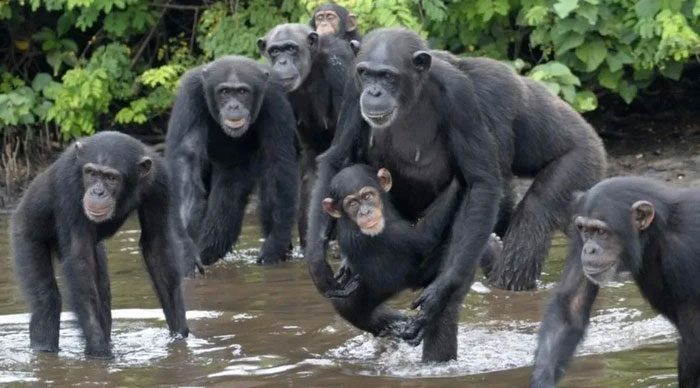
The situation within the tribe began to change quietly, with a chimpanzee named Humphrey rising to become the new leader. Jane observed that the chimpanzees in the original group began to divide, with some following Humphrey to live in the northern part of the territory while the rest remained in the southern part.
Initially, these two new groups did not interfere with each other’s activities; they lived their lives, and while there were occasional minor disputes over food, everything remained manageable.
However, Goodall later noticed that some male chimpanzees from the new Kasakra group often gathered together to whisper about something. One day, a chimpanzee from the Kahama group climbed a tree to pick fruit, and suddenly, several male chimpanzees from the new Kasakra group surrounded it and pulled the Kahama chimpanzee down, subsequently beating it to death.
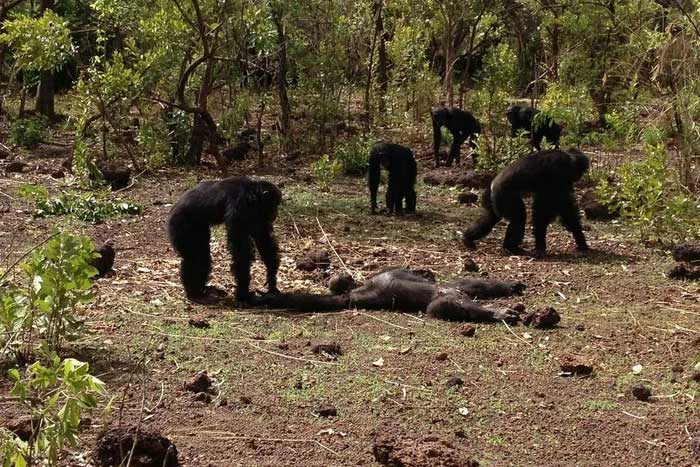
By early January 1974, Jane began to see six adult male chimpanzees from the new Kasakra group regularly gathering together, seemingly discussing something. A week later, an adult male chimpanzee from the Kahama group, while searching for food alone, was unexpectedly attacked and killed by six chimpanzees from the new Kasakra group.
Upon discovering this, the leader of the Kahama group immediately rallied the other members for revenge, resulting in a fierce confrontation.
Little did anyone expect that the war between these chimpanzees would last for four years. Over this time, numerous skirmishes occurred between the two chimpanzee groups. They used their teeth to attack each other during battles and smeared their opponents’ blood on themselves. The victorious group would also bite off important body parts of their adversaries to showcase their victories.
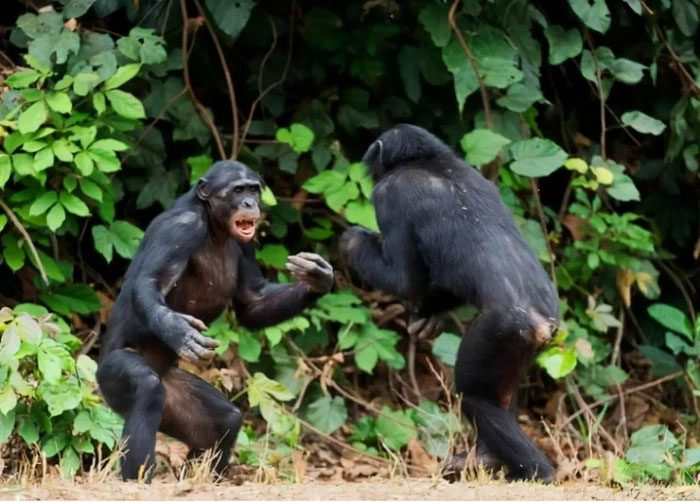
After four years, Jane found no chimpanzees from the southern group appearing; they may have died or gone missing.
Clearly outnumbered, the Kahama group suffered a disastrous defeat in this conflict. All the male chimpanzees in the group were killed, and the females were captured and integrated into the new Kasakra group.
According to Goodall’s calculations, the new Kasakra group lost only one adult male chimpanzee.
Subsequently, Jane Goodall wrote about this conflict in her zoology book, and readers have come to refer to this conflict as the “Gombe Chimpanzee War.”


















































